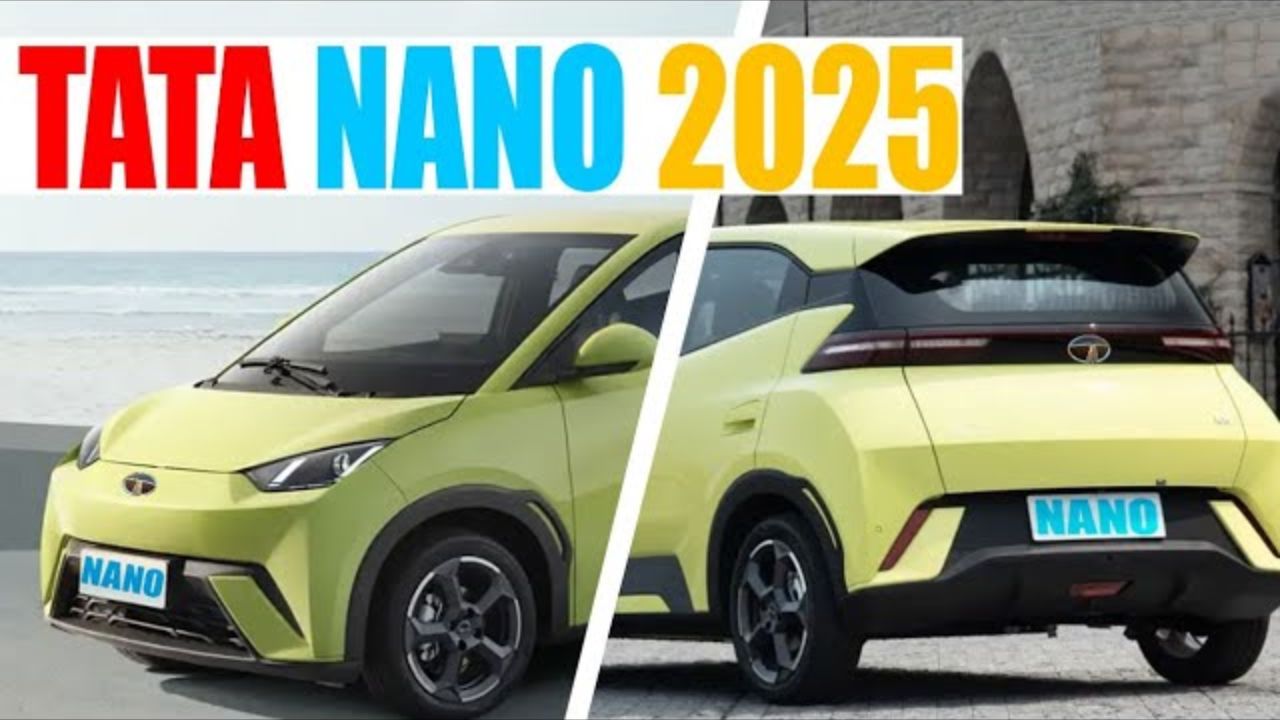The Tata Nano EV: one of Tata Motors’ most anticipated projects, is making waves as the brand considers bringing back the iconic small car in an all-electric version. Originally launched in 2008 as the world’s cheapest car,
the Nano aimed to make car ownership accessible to many Indian families. However, the car’s popularity faded due to various market challenges. Now, with the surge in demand for affordable EVs in India,
Tata Motors is reviving the Nano with a modern, electric twist, which has sparked a lot of interest in the automotive world.
The Tata nano ev 2024 Expected Design and Features-
The new Tata Nano EV is likely to retain its compact design but with updates that align with today’s aesthetics and requirements. Unlike the older Nano’s simplistic style, the EV variant may sport a sleeker,
modernized exterior with LED headlamps, alloy wheels, and a more robust build to improve its stability and safety. Inside, Tata Motors is expected to incorporate a tech-friendly dashboard with
features like a digital infotainment system, keyless entry, and perhaps even a touchscreen interface for navigation and entertainment. The cabin will likely prioritize space efficiency, offering a more spacious interior despite the car’s compact size.
Battery, Range, and Performance
The Tata Nano EV is anticipated to house a 17 to 20 kWh battery pack, which should provide a range of around 200-250 kilometers on a full charge. With a focus on city commutes and short-distance travel, the range will cater well to urban dwellers looking for an eco-friendly and economical driving option.
Charging is expected to support both home and fast-charging options, making it convenient for users to recharge their vehicles. Though it won’t be a high-performance car, the Nano EV’s compact structure and efficient motor will offer a decent acceleration and top speed suited to city traffic.
Price and Affordability
One of the Nano’s original appeals was its affordability, and Tata Motors aims to continue this legacy with the Nano EV. The expected price range is projected to be between INR 5-7 lakh (ex-showroom), positioning it as one of the most affordable electric cars in India.
This pricing strategy makes the Nano EV an ideal choice for budget-conscious buyers looking to switch to an electric vehicle. With the decreasing costs of EV components, Tata is likely to attract a large customer base by offering an affordable, eco-friendly, and compact EV.
Competition and Market Positioning
In the current EV market, Tata Motors’ primary competition in the budget EV segment includes models like the MG Comet EV and Tata’s own Tiago EV. However, with the Nano EV’s compact size and affordability, Tata is tapping into a unique market niche. The Nano EV is expected to target first-time car buyers, young professionals, and families looking for a second vehicle for city use. Its smaller footprint also makes it perfect for India’s congested urban roads, where parking and maneuvering larger vehicles can be challenging.
Expected Launch and Outlook
While Tata Motors has not officially confirmed a launch date, industry insiders suggest the Nano EV could debut by mid-2025. With India’s government promoting electric mobility through incentives and subsidies, the Nano EV aligns well with the country’s clean energy goals.
Tata’s successful EV models, such as the Nexon EV and Tiago EV, also build confidence in Tata’s ability to deliver a reliable and efficient electric Nano.
the tata nano ev 2024 Conclusion
The Tata Nano EV’s return has generated considerable excitement. With its expected affordability, practicality, and modern electric features, the Nano EV could redefine budget-friendly electric mobility in India.
If launched as anticipated, it promises to be a game-changer, bringing EV technology within reach for many Indian households and marking a new chapter for Tata Motors in the compact electric car segment.
